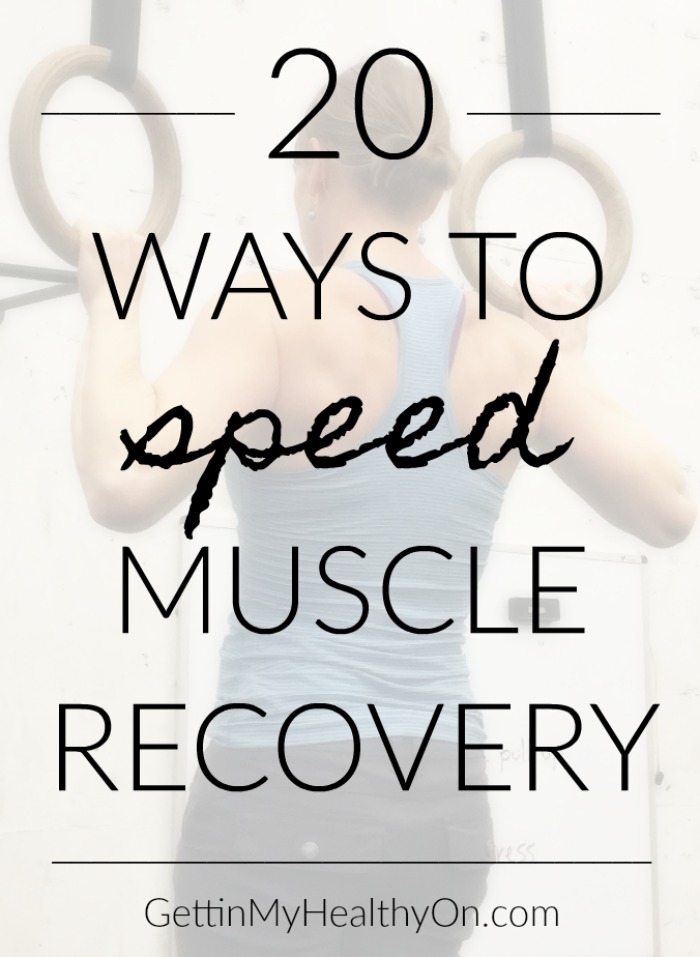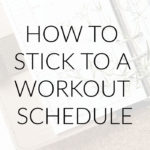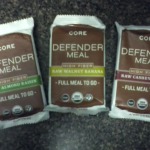Show your muscles some love!
After doing an intense workout, our muscles get fatigued and sore and need a little extra TLC. Whether you want to go for another big run or simply want to rid your body of intense soreness, there are several ways to speed up the recovery process.
I try to do several of these but have definitely not done them all. A few have not been scientifically proven to help shorten muscle recovery time, but there are a number of athletes who support each and every method. While some may not always seem to help you recover faster, they also won’t make anything worse if done properly. I’ve researched and compiled a list of common methods you can use to speed muscle recovery. Hope you find it useful!

- Rest: It is possibly the most important part of recovery. During a rest period, your body can adapt to the stress that exercise has put on it and start to rebuild muscle. Wait a day or two to work the same muscle group again to allow enough time for muscle recovery. Without enough rest time, you can over-train your muscles, most likely injuring yourself.
- Ice: Icing is one of the best ways to help muscle recovery. It reduces inflammation and soreness. An ice bath is a beneficial and efficient way to soothe all muscles.
- Incorporate Active Recovery: This means a bit of low intensity exercise following high intensity as well as in the following days. Doing so helps blood circulation, reducing lactic acid and speeding muscle recovery.
- Hydrate During Exercise: Drink plenty of water during exercise. When you’re dehydrated, you don’t have enough water to cool yourself, which may result in exhaustion and slower recovery.
- Cool Down: Continue with some light activity after an intense workout to help get rid of lactic acid in the muscles.
- Stretch: Stretch while muscles are still warm. They tighten up during exercise, so it helps to stretch them back out to prevent injury.
- Foam Roll: This helps stretch your muscles as well as break up scar tissue, aiding in recovery. You can also roll a tennis or golf ball under your feet for the same affect.
- Refuel with Carbs/Protein: Within the first 30-60 minutes following a workout, consume a combination of easily digested carbs and protein. By doing so right after a workout, muscles are able to absorb more fuel, jump-starting the repair process and restoring energy. A ratio of 4 carbs to 1 protein is a generally accepted amount that works well. Chocolate milk is a great source.
- Consume More Protein Throughout the Day: It repairs and builds muscles.
- Eat Healthy Fats: Omega-3 and -6 fatty acids reduce inflammation, speed muscle recovery, and promote muscle growth. In addition they also allow for more frequent training and increase your stamina. Fish oil, avocados, salmon, pistachios, flaxseed oil, and more—just take your pick!
- Massage Your Muscles: This helps break up scar tissue, increase blood flow, release toxins, and reduce inflammation.
- Use EMS: Electronic Muscle Stimulation sends electronic pulses to muscles, making them contract. This speeds up the recovery process by getting rid of lactic acid, increasing blood flow, and stimulating endorphins.
- Wear Compression Clothing: It’s not proven, but many athletes find compression clothes to help with recovery. It promotes blood flow, helping flush out toxins like lactic acid.
- Get More Sleep: When you fall into deep REM sleep, your body produces testosterone, which is used in muscle recovery.
- Replenish Electrolytes: With exercise your body loses electrolytes through perspiration. For muscle recovery to begin, you need to replenish those electrolytes, which include, but are not limited to, sodium, potassium, and calcium. Sports drinks as well as salt tablets are popular ways people choose to replenish electrolytes.
- Take an Anti-Inflammatory Drug: Taking aspirin or ibuprofen can help reduce swelling and muscle pain. It is recommended to not take them before exercise, as it can numb your ability to recognize pain, encouraging injury.
- Heat a Sore Spot: Do not heat after exercise, as it can just increase inflammation. However, heat can be applied to a tight spot prior to exercise to loosen it up. Be careful, though. If the area hurts more than it did the day before, don’t use heat.
- Take an Epsom Salt Bath: Taking a hot bath with Epsom salts allows magnesium to be absorbed through the skin, relaxing muscle groups. To do so dissolve about 2 cups of Epsom salts into a hot bath and soak in it for around 15 minutes, as to not reabsorb the toxins that have been released.
- Switch Your Workouts Up: If you’re running all the time, for example, incorporate more cross-training to work different muscle groups. This will actively rest your heavily used muscles while still working your body.
- Listen to Your Body: Everyone is different and may need, for example, more time off or extra icing. Depending on what hurts and how you feel, take an extra day off or incorporate more muscle recovery methods to more fully recover.
What methods to speed muscle recovery do you find help the most? Stretching, refueling, icing, and switching up my workouts are how I mainly help my body recover. I do some other things as well, but I can’t always tell if they’re helping me recover. When it comes down to it, I know doing certain things is good for my body, whether it speeds up my muscle recovery or not—doesn’t hurt to try it!
Do any of them sound crazy to you? EMS probably sounds the craziest to me, but I know it helps. When I sprained my ankle in high school during volleyball practice, my physical therapist would do the EMS method.





Protein shakes after a workout are a must!
DOMS and I have a love/hate relationship! I welcome the soreness because I know I switched my workout up enough but hate that it aches to even walk! I actually do light cardio when I’m extremely sore; something about stretching out while lengthening my muscles helps me.
Makes sense! I love being sore because it makes me feel like I’ve actually been doing something, but I need to do more active rest like you with your light cardio. Definitely guilty of being lazy sometimes.
Doing a light impact cardio workout helps me stretch out and lengthen my muscles after a tough lifting session!
Great article! I just started using a Foam Roller a few weeks ago — what a great product!
It is essential to accelerate muscle recovery for a number of reasons. In order to get back into your fitness routine, incorporating a few healing techniques for sore muscles is essential. Whether you’re a seasoned athlete or just starting a fitness routine, giving the muscle time to repair itself is imperative to muscle recovery, which can affect your ability to exercise or train on a regular basis. No matter what your fitness level, you’ll be able to get back on track with your exercise routine by following these tips.,`”;
Until next time
<http://healthmedicinebook.com/index.php